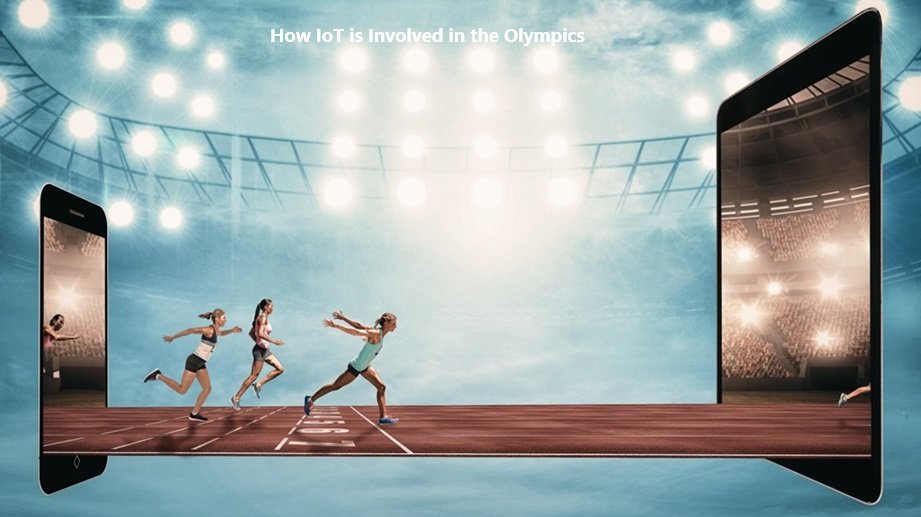The Olympics, a pinnacle of global sporting excellence, has always been a stage for showcasing the best athletes in the world. As technology continues to advance, the Internet of Things (IoT) has become an integral part of enhancing the Olympic experience for athletes, spectators, and organizers alike. IoT refers to the network of interconnected devices and systems that communicate and share data. In the context of How IoT is Involved in the Olympics, IoT plays a crucial role in improving performance, ensuring safety, and providing a seamless experience for everyone involved. Here’s a detailed look at how IoT is transforming the Olympics.
1. Enhancing Athlete Performance
One of the most significant impacts of IoT in the Olympics is its contribution to enhancing athlete performance. IoT devices are used to gather and analyze data that helps athletes train more effectively and perform at their peak during competitions.
- Wearable Technology: Athletes use wearable devices equipped with sensors to monitor various physiological metrics such as heart rate, body temperature, and movement patterns. These wearables provide real-time data that coaches and athletes can use to adjust training regimens, prevent injuries, and optimize performance.
- Smart Equipment: IoT-enabled sports equipment, such as smart skis, tennis rackets, and bicycles, offer detailed insights into an athlete’s technique and performance. For instance, smart skis can analyze an athlete’s speed, angle, and turn efficiency, helping skiers improve their skills.
- Data Analytics: Advanced analytics platforms process data collected from wearables and smart equipment. By leveraging machine learning algorithms, these platforms provide actionable insights and predictive analytics that inform training strategies and game-day decisions.
2. Improving Safety and Health
Safety and health are paramount in any sporting event, and IoT technologies play a crucial role in ensuring the well-being of athletes.
- Injury Prevention: IoT devices monitor athletes’ physical conditions and detect signs of potential injuries. For example, sensors in wearables can alert coaches and medical staff to unusual stress levels or signs of fatigue, enabling proactive intervention to prevent injuries.
- Medical Monitoring: During competitions, IoT devices enable continuous health monitoring. Wearables track vital signs and send alerts to medical teams if an athlete experiences abnormal conditions. This real-time monitoring ensures that any medical issues are addressed promptly.
- Emergency Response: IoT systems are integrated with emergency response protocols. In case of an injury or medical emergency, data from IoT devices can be used to quickly assess the situation and coordinate an effective response, ensuring timely medical attention.
3. Enhancing Fan Engagement
The Olympics attract millions of viewers worldwide, and IoT technologies enhance the spectator experience in various ways.
- Smart Stadiums: IoT transforms stadiums into smart venues with features such as interactive seating, automated lighting, and climate control. Fans can enjoy a more comfortable and engaging experience with personalized services and real-time information.
- Enhanced Viewing Experience: IoT devices provide real-time statistics, live updates, and immersive experiences through augmented reality (AR) and virtual reality (VR). Spectators can access detailed performance metrics, view multiple camera angles, and engage with interactive content.
- Wearable Fan Devices: Some stadiums offer wearable devices for fans that provide features like seat location tracking, access to exclusive content, and personalized notifications. These devices enhance the overall fan experience by offering convenience and tailored information.
4. Streamlining Operations
Efficient operations are crucial for the smooth running of the Olympics, and IoT technologies play a vital role in optimizing various aspects of event management.
- Logistics and Supply Chain: IoT systems track and manage the supply chain for equipment, merchandise, and other resources. Real-time tracking ensures that supplies are delivered on time and that inventory levels are monitored effectively.
- Venue Management: Smart sensors and IoT systems monitor and control various aspects of venue management, including energy usage, lighting, and security. This helps reduce operational costs and ensures a safe and comfortable environment for athletes and spectators.
- Transportation and Navigation: IoT-enabled transportation systems assist in managing the movement of athletes, officials, and visitors. Real-time tracking of buses, trains, and other transport modes helps coordinate schedules and reduce congestion.
5. Enhancing Security
Security is a top priority at the Olympics, and IoT technologies contribute significantly to ensuring a secure environment.
- Surveillance Systems: IoT-based surveillance systems use smart cameras and sensors to monitor venues and detect suspicious activities. Advanced analytics help security personnel identify potential threats and respond effectively.
- Access Control: IoT systems manage access to restricted areas using biometric authentication, RFID tags, and smart credentials. This ensures that only authorized personnel can enter sensitive areas, enhancing overall security.
- Crowd Management: IoT devices monitor crowd movement and density in real time. This data helps manage crowd flow, prevent bottlenecks, and ensure that emergency evacuation plans are effectively executed.
6. Sustainability and Environmental Impact
Sustainability is a growing concern for major sporting events, and IoT technologies help minimize the environmental impact of the Olympics.
- Energy Management: Smart grids and IoT systems optimize energy usage in venues and facilities. Real-time monitoring of energy consumption helps reduce waste and promote efficient use of resources.
- Waste Management: IoT sensors track waste levels and optimize waste collection processes. This helps minimize waste production and ensures that recycling and disposal are managed efficiently.
- Water Management: IoT systems monitor water usage and detect leaks in real time. This helps conserve water resources and reduce the environmental footprint of the event.
Conclusion
The integration of IoT technologies in the Olympics has transformed the way athletes train, perform, and interact with fans. From enhancing performance and ensuring safety to improving fan engagement and streamlining operations, IoT plays a pivotal role in the success of the Games. As technology continues to evolve, the impact of IoT on the Olympics is likely to grow, further enhancing the overall experience for everyone involved. The future of the Olympics promises even more innovation and connectivity, thanks to the ongoing advancements in IoT.
FAQs About, How IoT is Involved in the Olympics.
1. What is the Internet of Things (IoT)?
The Internet of Things (IoT) refers to a network of interconnected devices and systems that communicate and share data over the Internet. These devices can include everything from wearable fitness trackers to smart home appliances, and they use sensors and software to collect and exchange information.
2. How does IoT enhance athlete performance at the Olympics?
IoT enhances athlete performance through wearable technology that monitors physiological metrics like heart rate, body temperature, and movement patterns. Smart equipment provides detailed insights into technique and performance. Data analytics platforms process this information to offer actionable insights, helping athletes train more effectively and perform better during competitions.
3. What role does IoT play in ensuring athlete safety and health?
IoT devices help ensure athlete safety and health by continuously monitoring vital signs and detecting early signs of potential injuries. Wearables alert coaches and medical staff to unusual stress or fatigue, while real-time health monitoring during competitions allows for quick medical response in case of emergencies.
4. How does IoT improve the spectator experience at the Olympics?
IoT improves the spectator experience by transforming stadiums into smart venues with features like interactive seating, automated lighting, and climate control. Enhanced viewing experiences are offered through real-time statistics, live updates, augmented reality (AR), and virtual reality (VR). Wearable fan devices provide additional convenience and personalized information.
5. In what ways does IoT streamline Olympic operations?
IoT streamlines Olympic operations by optimizing logistics and supply chain management, monitoring venue conditions (such as energy usage and security), and assisting with transportation and navigation. These systems help ensure that resources are managed efficiently, schedules are coordinated, and operations run smoothly.
6. How does IoT contribute to security at the Olympics?
IoT contributes to security through advanced surveillance systems that use smart cameras and sensors to monitor venues and detect suspicious activities. Access control systems manage entry to restricted areas using biometric authentication and RFID tags. Crowd management systems monitor movement and density to ensure safety and prevent congestion.


